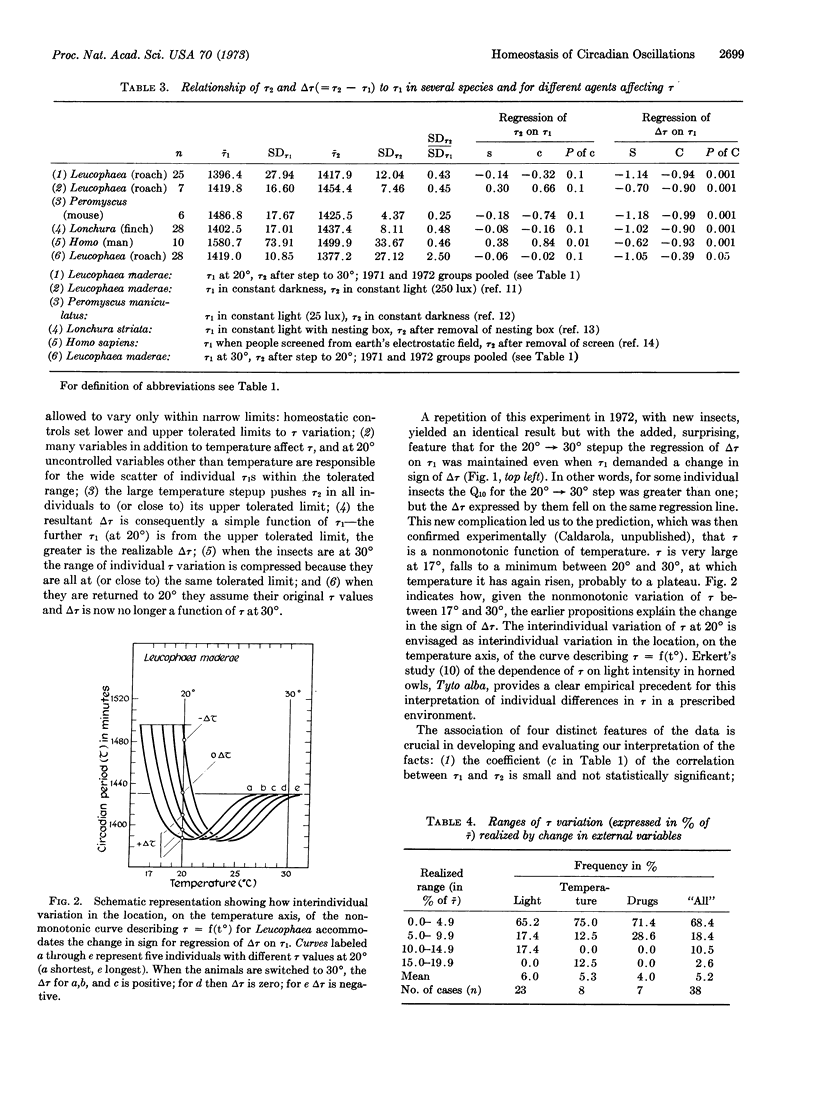Abstract
Some well-defined statistical regularities characterize the change in period (τ) of cockroach circadian oscillations subjected to a large temperature step. These are explainable in terms of the well-known temperature-compensation (homeostasis) of τ of circadian oscillations. The same regularities are detectable in published data on the effect of several other variables affecting several other circadian oscillations. The proposition is then developed that the temperature-compensation of τ is only a special case of a general homeostatic conservation of the frequency of circadian oscillations in the face of all changes they are likely to encounter in the cell. Such a general homeostasis of τ is a functional prerequisite for an oscillator to function as a useful “clock.”
Keywords: Leucophaea maderae, temperature
Full text
PDF




Selected References
These references are in PubMed. This may not be the complete list of references from this article.
- Feldman J. F. Lengthening the period of a biological clock in Euglena by cycloheximide, an inhibitor of protein synthesis. Proc Natl Acad Sci U S A. 1967 Apr;57(4):1080–1087. doi: 10.1073/pnas.57.4.1080. [DOI] [PMC free article] [PubMed] [Google Scholar]
- HOFFMANN K. Experimental manipulation of the orientational clock in birds. Cold Spring Harb Symp Quant Biol. 1960;25:379–387. doi: 10.1101/sqb.1960.025.01.040. [DOI] [PubMed] [Google Scholar]
- PITTENDRIGH C. S. Circadian rhythms and the circadian organization of living systems. Cold Spring Harb Symp Quant Biol. 1960;25:159–184. doi: 10.1101/sqb.1960.025.01.015. [DOI] [PubMed] [Google Scholar]
- Pittendrigh C. S., Caldarola P. C., Cosbey E. S. A differential effect of heavy water on temperature-dependent and temperature-compensated aspects of circadian system of Drosophila pseudoobscura. Proc Natl Acad Sci U S A. 1973 Jul;70(7):2037–2041. doi: 10.1073/pnas.70.7.2037. [DOI] [PMC free article] [PubMed] [Google Scholar]
- Pittendrigh C. S. ON TEMPERATURE INDEPENDENCE IN THE CLOCK SYSTEM CONTROLLING EMERGENCE TIME IN DROSOPHILA. Proc Natl Acad Sci U S A. 1954 Oct;40(10):1018–1029. doi: 10.1073/pnas.40.10.1018. [DOI] [PMC free article] [PubMed] [Google Scholar]
- v FRISCH K. Die Sonne als Kompass im Leben der Bienen. Experientia. 1950 Jun 15;6(6):210–221. doi: 10.1007/BF02173654. [DOI] [PubMed] [Google Scholar]


